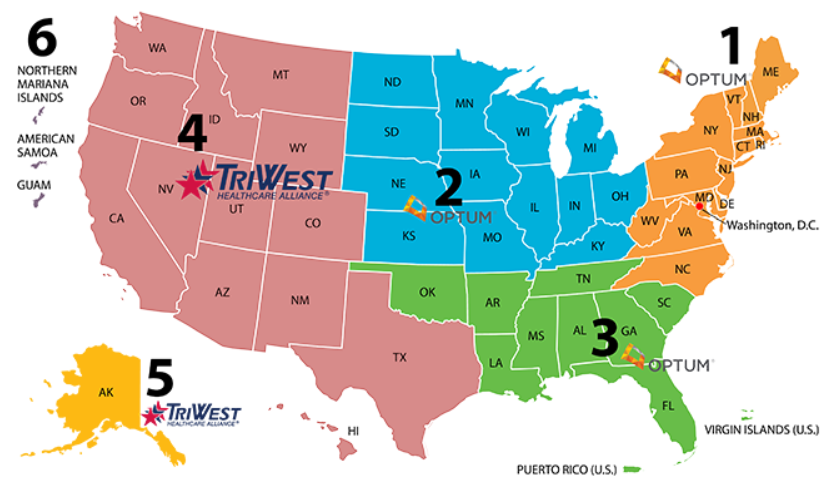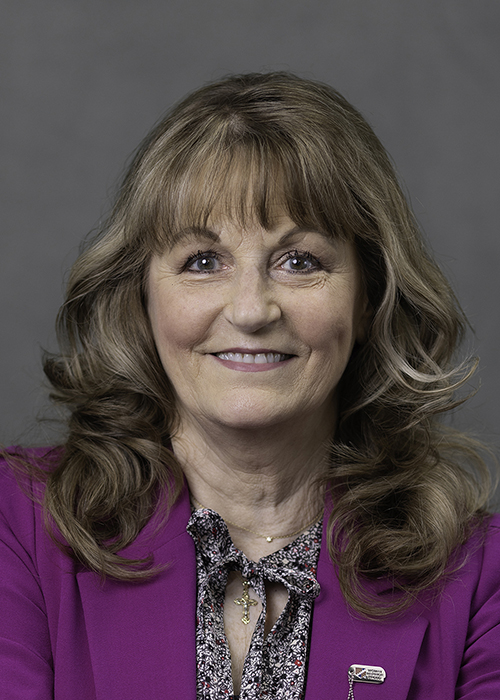The VA’s pioneering work to deliver health care to veterans through community partnerships is not widely known. In 1945, the department established a hometown program allowing community providers to treat returning World War II veterans for service-connected ailments at the government’s expense, thereby preventing hospitalizations.
Today, the VA manages a sprawling network of community care providers because of the MISSION Act. The law further expands community care eligibility and provides a new urgent care benefit for veterans.
One provision of the act included a new Veterans Community Care Program (VCCP), established in June 2019. A component of the program is the VA Community Care Network (CCN). CCN is made up of six regional networks being deployed across all U.S. states and territories in a phased approach. CCN contractors TriWest Healthcare Alliance (TriWest) and OptumServe (called third-party administrators, or TPAs) are VA’s direct link to community providers to ensure veterans receive timely, high-quality care as close to home as possible.
[RELATED: VA Offers Message of Support for Military Sexual Trauma Survivors]
OptumServe manages regions 1, 2, and 3, which include all states east of the Mississippi as well as Arkansas, Iowa, Kansas, Louisiana, Minnesota, Missouri, Nebraska, North Dakota, Oklahoma, and South Dakota, plus Puerto Rico. TriWest manages regions 4 and 5, covering the western states.

The regional networks that make up the VA's Community Care Network (image via VA.gov)
Last October, MOAA reported the award of a new community care contract in Alaska to TriWest for Region 5. TriWest launched the new network on April 1 in Kodiak. The contract is expected to be fully implemented across the rest of the state by mid-June.
A community care contract for veterans living in Guam, American Samoa and Saipan will be covered under a separate, region 6 contract which has yet to be awarded. VA is currently working on modifying the region 4 CCN contract to cover Pacific Island veterans. Until the contract is awarded, veterans will continue to receive care from their current community providers in the region.
MOAA and our veterans and military service organization partners meet monthly with VA’s Office of Community Care to receive updates on VCCP and CCN. This month’s meeting included some good information for veterans and their families to better understand the community care process and what the VA is doing to improve care coordination.
VA Community Care in a Nutshell
Veterans enrolled in VA health care may receive care in the community based on their health care needs and preferences, and whether they meet certain eligibility criteria. Veterans always have the option to receive care in a VA facility if they so desire.
Understanding eligibility, access standards, and the overall process can be a little daunting to even the most seasoned veteran, and even more so for a newcomer using VA community care services.
The VA created a simple guide to understanding community care — click here for a PDF guide answering key questions for veterans, including:
- Am I eligible to see a community provider?
- What are the drive time access standards?
- What are the wait time standards?
The VA developed another guide for veterans and their families to help them understand the community care process. This guide provides veterans and family members with a quick overview, and can also be used to document VA and TPA contacts and appointment information that veterans can post at home or elsewhere for quick reference.
Click here to learn more about the eight-step community care process:
- Step 1: Consult Creation and Review
- Step 2: Scheduling
- Step 3: Authorization
- Step 4: Community Care Visit
- Step 5: Scheduling Additional Appointments
- Step 6: Reauthorization
- Step 7: Prescription and Durable Medical Equipment Pick-Up
- Step 8: Receiving and Paying Your Bill
MOAA expects to hear more about VA’s progress in rolling out regions 5 and 6 in the coming weeks and months, including other enhancements to improve veterans’ experiences in accessing community care services. Stay tuned to upcoming MOAA newsletters for additional community care updates and advancements as VA implements other key provisions the MISSION Act.
Stay Informed
It’s more important than ever to make sure you’re in the know and your military benefits are protected.

